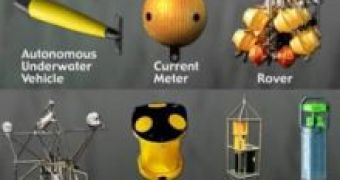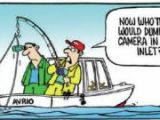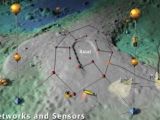Scientists are limited in ocean research, primarily because today's underwater instruments lack power. However, they came up with a solution: the installation of an entire network of underwater cables that will be able to provide non-stop power supply to instruments.
"NEPTUNE's unprecedented access to the deep sea world will increase our understanding of the oceans in the same way that the Hubble Telescope is revolutionizing our knowledge of outer space. Stage I of the NEPTUNE project will lay an 800 km ring of powered fiber optic cable on the seabed over the northern part of the Juan de Fuca tectonic plate, a 200,000 sq km region in the northeast Pacific off the coasts of British Columbia, Washington and Oregon. This tectonic plate is the smallest of the dozen major plates that make up the planet's surface and offers a full range of Earth and ocean processes for us to observe.
The NEPTUNE cable network will initially feature two sea floor "laboratories", or nodes, one on the northern edge of Barkley Canyon, the other close to the active venting along the Endeavour Ridge. Additional funding is being sought for four additional nodes. From these nodes, land-based scientists will control and monitor sampling instruments, video cameras and remotely operated vehicles as they collect data from the ocean surface to under the sea floor. Instruments will be interactive-scientists will instruct them to respond to events such as storms, plankton blooms, fish migrations, earthquakes, tsunamis, and underwater volcanic eruptions, as they happen.
Information and images gathered by NEPTUNE instruments will flow instantly via the Internet to the shore station in Port Alberni, British Columbia, and from there to Victoria, British Columbia. In this way, NEPTUNE will bring this part of the Pacific Ocean on line to laboratories, classrooms and living rooms around the world." (NEPTUNE official site) By 2007, NEPTUNE planners hope to have laid an optical fiber and power cable from Canada's Vancouver Island, stretching several hundred miles into the ocean.
Prior to the installation of NEPTUNE, two test sites are being prepared: VENUS (Victoria Experimental Network Under the Sea) by the University of Victoria and MARS (Monterey Accelerated Research System) by the Monterey Bay Aquarium Research Institute. The first in-water component of VENUS was deployed in December 2005 in Saanich Inlet, a deep coastal fjord located north of Victoria, and live data feeds are expected in January 2006.
The NEPTUNE project will have many features and will gather a large amount of data. The point is to observe the interaction between various physical factors and the ocean life. Scientists will be able to continuously monitor the hydrothermal system and the seismic activity in the region and to observe the water mass movement. They will monitor the hydrates in order to better understand the formation and degradation of the mound structures and the changes occurring in the biological and chemical activity in the area. There will be an ecology experiment on the region near Barkley Canyon that will monitor the transfer of energy and nutrients from the water to the sea floor, as well as through the canyon. The scientists will monitor the variability in oceanographic processes and the influence of long term climate change.

 14 DAY TRIAL //
14 DAY TRIAL // 

